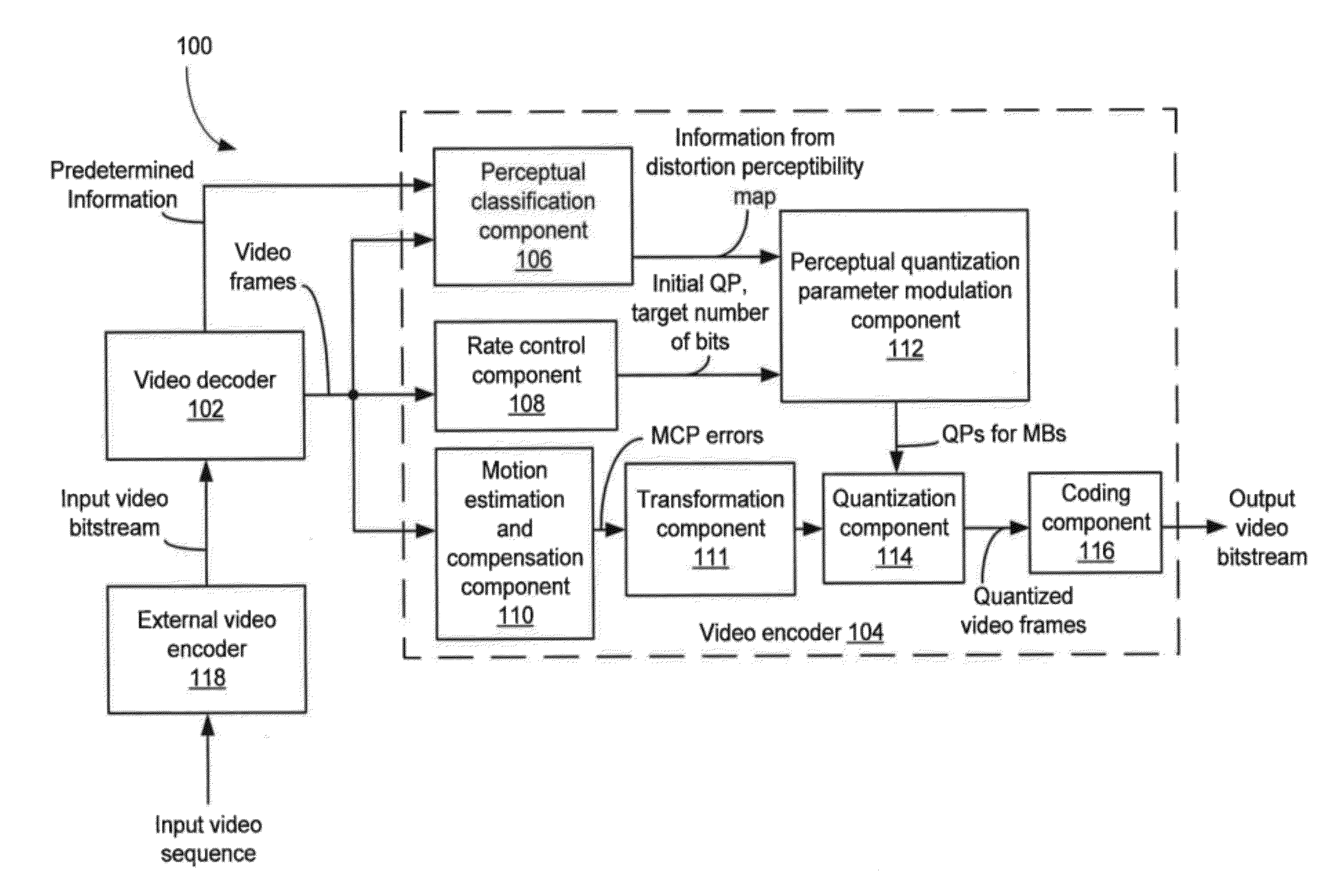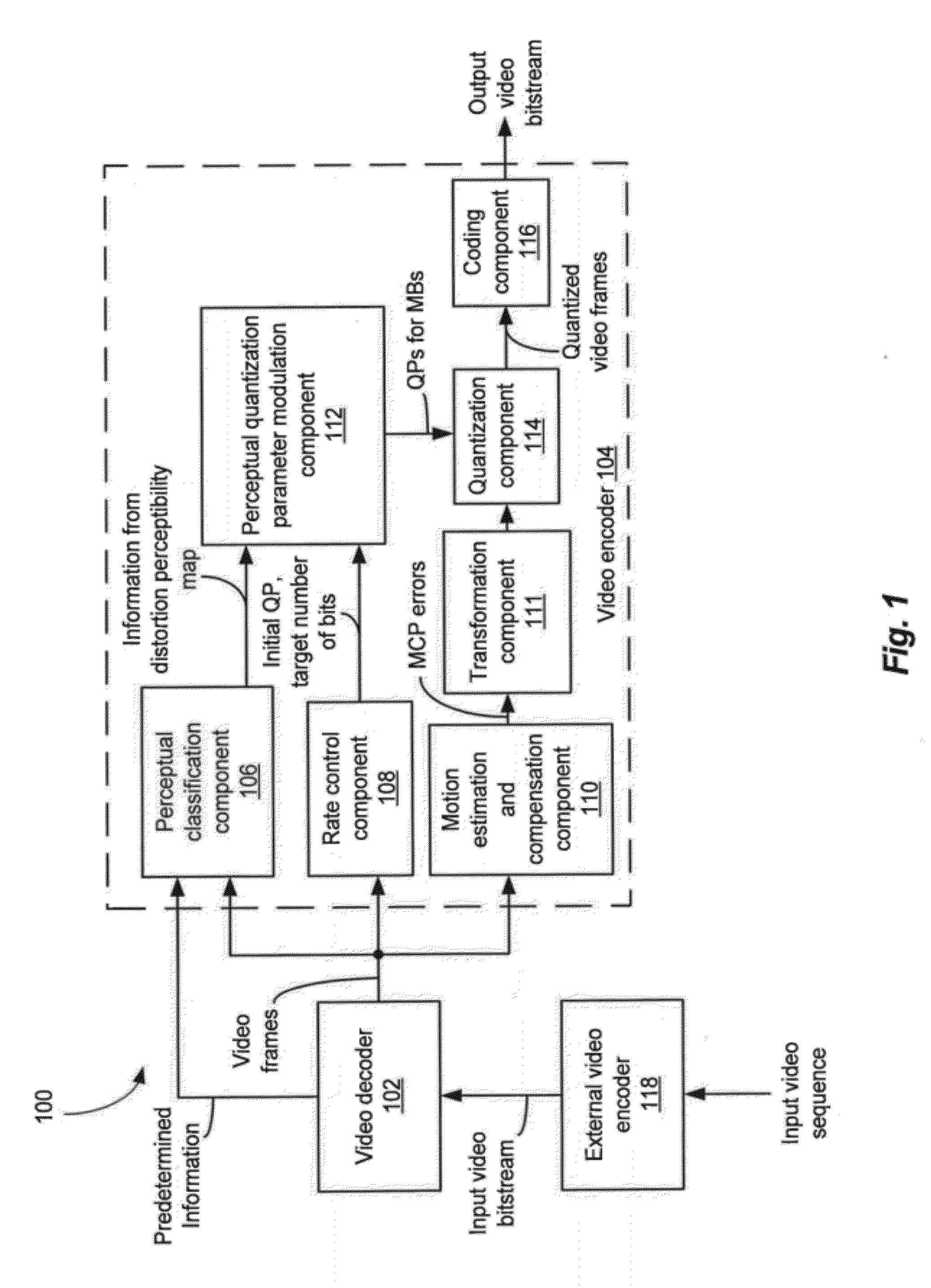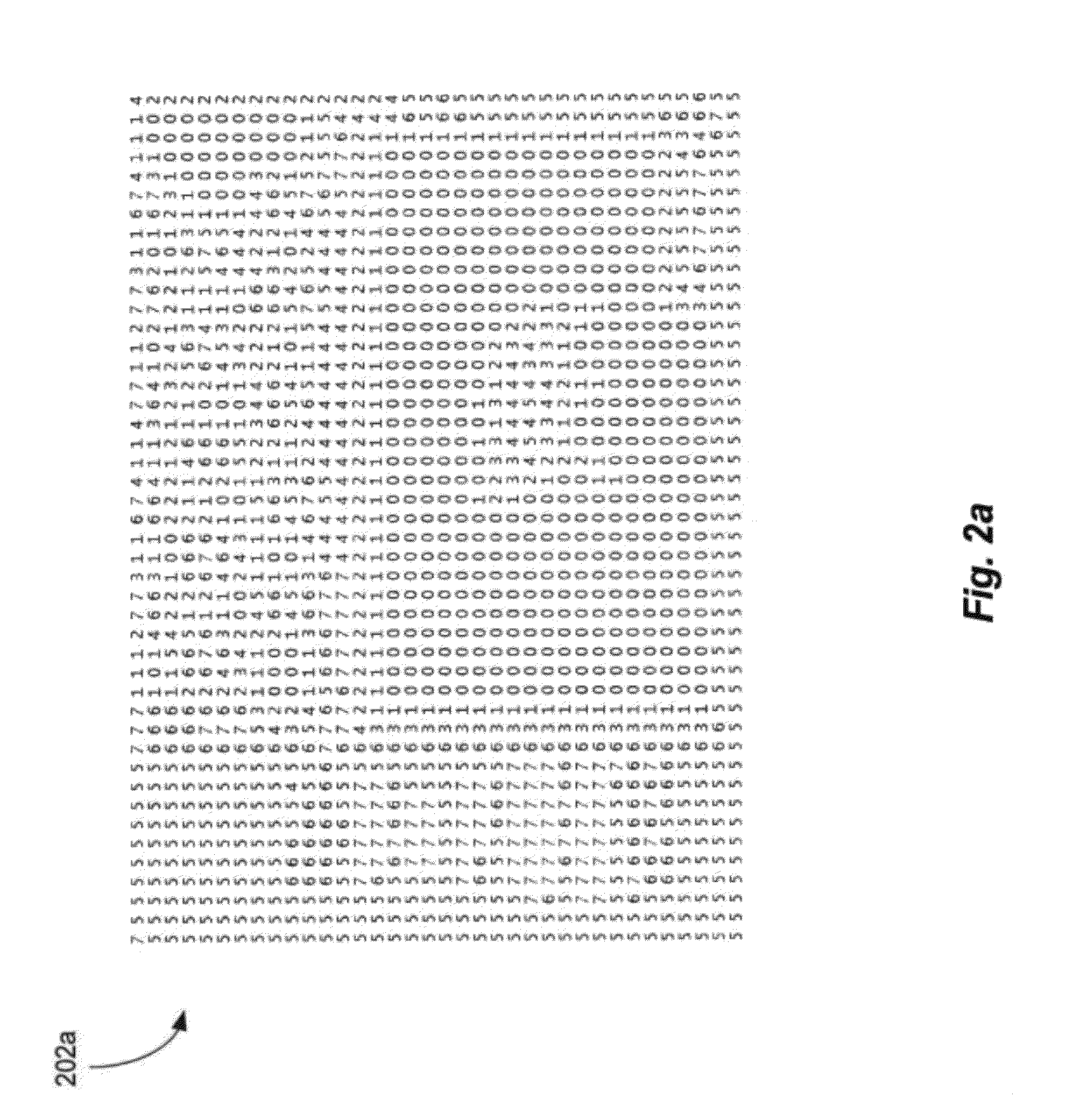Perceptual processing techniques for video transcoding
a technology of video transcoding and processing techniques, applied in the field of video transcoding systems and methods, can solve the problems of reducing the output bit rate of video encoders, qps that may not provide the best possible qoe for transcoding video delivered to the end user, and reducing the qoe of encoded video, so as to improve the perceptual quality of transcoding video
- Summary
- Abstract
- Description
- Claims
- Application Information
AI Technical Summary
Benefits of technology
Problems solved by technology
Method used
Image
Examples
Embodiment Construction
[0026]Systems and methods of video transcoding are disclosed that employ perceptual processing techniques for enhancing the perceptual quality (also referred to herein as a / the “quality of experience” or “QoE”) of transcoded video information, communications, entertainment, and other video content (also referred to herein as a / the “transcoded video”). Such systems and methods of video transcoding are operative to perform perceptual processing of an input video bitstream (also referred to herein as an / the “input bitstream”) using predetermined information carried by the input bitstream. Having performed such perceptual processing of the input bitstream, the QoE for transcoded video delivered to an end user is significantly improved.
[0027]FIG. 1 depicts an illustrative embodiment of an exemplary video transcoding system 100 that employs a perceptual processing technique, in accordance with the present application. As shown in FIG. 1, the video transcoding system 100 includes a video d...
PUM
 Login to View More
Login to View More Abstract
Description
Claims
Application Information
 Login to View More
Login to View More - R&D
- Intellectual Property
- Life Sciences
- Materials
- Tech Scout
- Unparalleled Data Quality
- Higher Quality Content
- 60% Fewer Hallucinations
Browse by: Latest US Patents, China's latest patents, Technical Efficacy Thesaurus, Application Domain, Technology Topic, Popular Technical Reports.
© 2025 PatSnap. All rights reserved.Legal|Privacy policy|Modern Slavery Act Transparency Statement|Sitemap|About US| Contact US: help@patsnap.com



